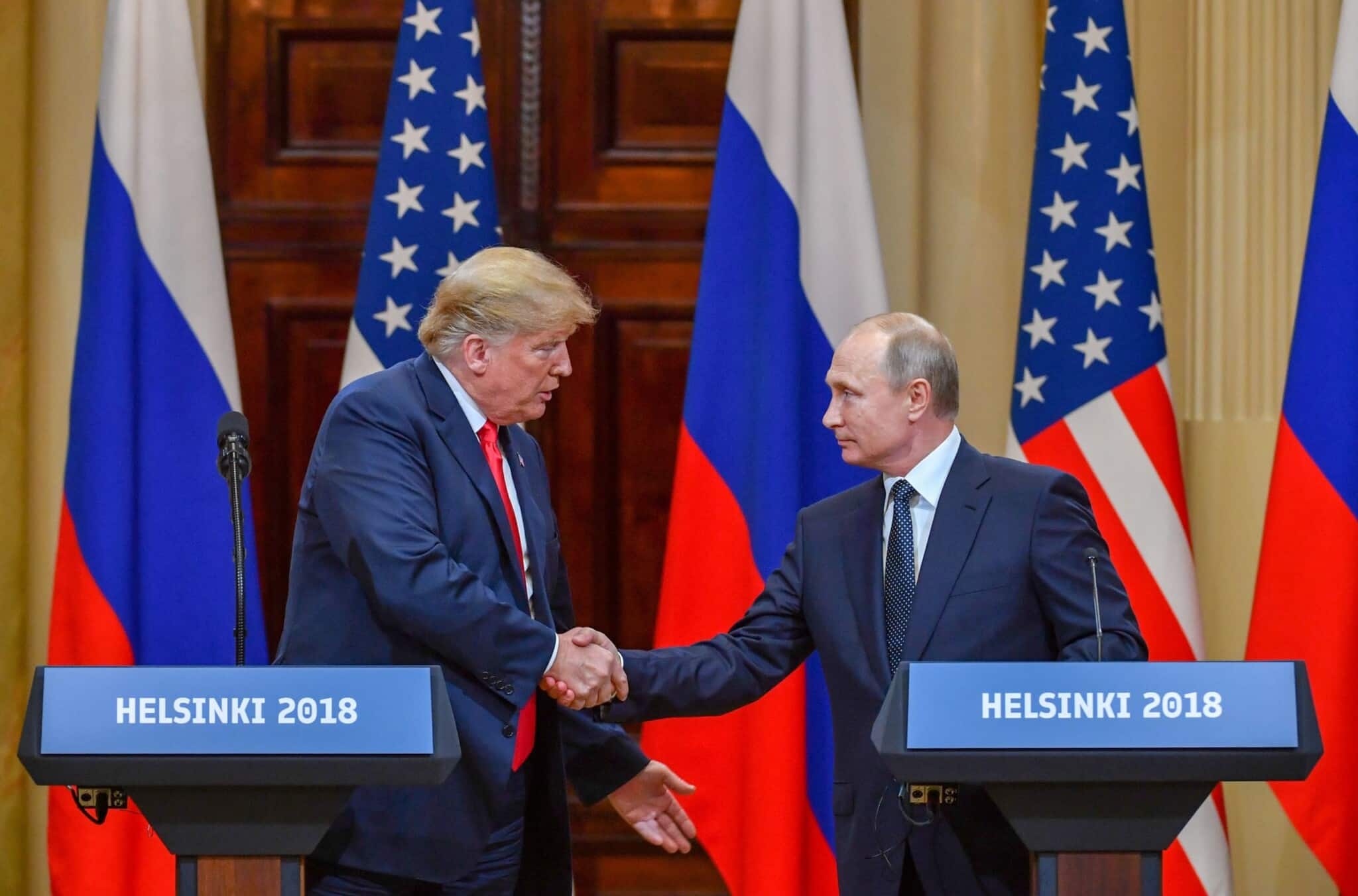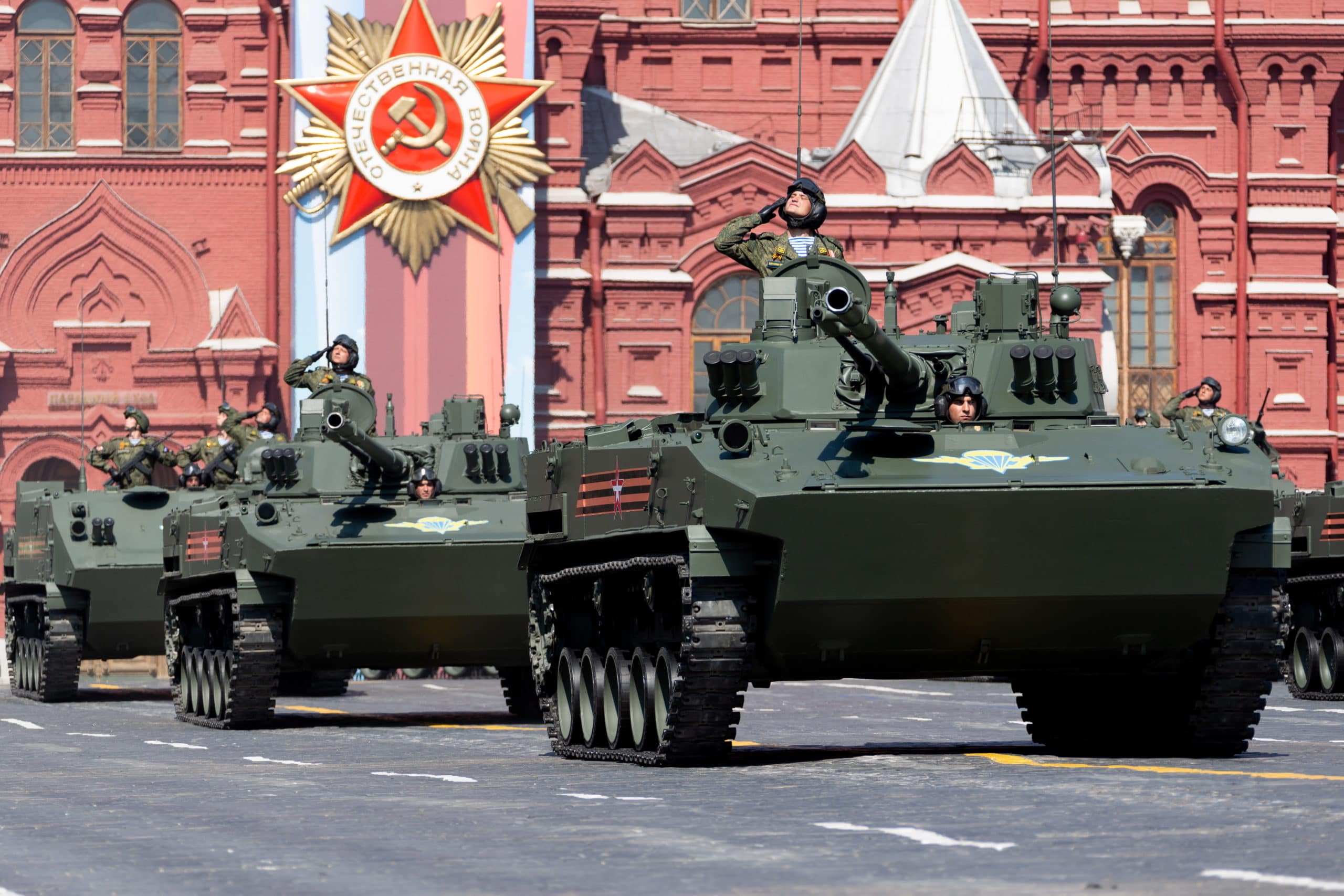January 14, 2021 | From Trump to Biden Monograph
Russia
January 14, 2021 | From Trump to Biden Monograph
Russia
Current Policy
The 2017 National Security Strategy identified Russia as a “revisionist power” working “to shape a world antithetical to U.S. values and interests.”1 The National Defense Strategy identified “long-term, strategic competition” with revisionist powers as “the central challenge to U.S. prosperity and security.”2 In keeping with these assessments, the Trump administration sought to address Russian threats ranging from election meddling to arms control – often taking a firmer line than its predecessor. Yet the administration’s Russia policy was often contradictory in practice, with President Trump frequently undermining the tough line taken by his administration and both parties in Congress.
To combat Russian election meddling, U.S. Cyber Command (CYBERCOM) conducted preemptive operations targeting Russian trolls during the 2018 elections3 as well as Russian state and criminal hackers ahead of the 2020 elections.4 The administration also increased election-related cooperation with state and local governments and the private sector,5 issued dozens of election-related designations,6 closed Russian diplomatic facilities,7 and sought to deter future meddling by authorizing sanctions against “the largest business entities” of any interfering country.8 Further in the cyber realm, the administration sanctioned and indicted numerous Russian hackers, issued technical advisories exposing Russian cyber threats,9 and increased cyber cooperation with European allies.10 CYBERCOM reportedly also infiltrated Russia’s power grid to deter Russian cyberattacks against U.S. critical infrastructure.11

Russian President Vladimir Putin and President Trump shake hands before a joint press conference following a meeting in Helsinki, Finland, on July 16, 2018. (Photo by Brendan Smialowski/AFP via Getty Images)
Following Russia’s attempted assassination in England of former double-agent Sergei Skripal using a nerve agent, the administration expelled 60 Russian intelligence officers and closed Russia’s Seattle consulate – a response Trump later privately complained was too strong.12 The administration also imposed various congressionally mandated sanctions, including a partial ban on lending to the Russian government and buying Russian sovereign debt, but waived the harshest sanctions.13
Altogether, Treasury sanctioned over 365 Russian targets on grounds ranging from aggression against Ukraine to abuses of human rights,14 despite Trump’s objection to the Russia sanctions in the Countering America’s Adversaries Through Sanctions Act (CAATSA).15
On arms control, the administration withdrew in 2019 from the Intermediate-Range Nuclear Forces (INF) Treaty, citing longstanding Russian violations.16 The administration also withdrew from the Open Skies Treaty17 and declined to extend New START without a political agreement that improves the treaty’s verification measures, covers Russia’s new-generation and non-strategic nuclear weapons, and provides a framework for a future multilateral treaty including China.18 Despite nearing an interim deal for a one-year treaty extension and nuclear freeze, disagreement over verification stalled negotiations before the U.S. election rendered them moot.19
In February 2020, Washington fielded a low-yield submarine-launched ballistic missile intended to deter Russian nuclear coercion.20 The administration also increased the U.S. military presence in Poland21 and the Black Sea region,22 boosted defense cooperation with Ukraine,23 Georgia,24 and the Baltic states,25 and initially expanded the European Deterrence Initiative (EDI), though Trump diverted almost $1.1 billion in EDI funding to the border wall.26 In contrast to its predecessor, the administration provided lethal military aid directly to Ukraine.27
The administration sought to reduce European reliance on Russian energy by supporting U.S. liquified natural gas exports and alternative energy infrastructure projects.28 It opposed TurkStream and Nord Stream 2 (NS2)29 – Russian natural gas pipelines that threaten European energy security and Ukraine’s economic health and strategic leverage – but refrained from using sanctions to stop NS2 until Congress imposed them in December 2019.30 As Congress prepared further NS2 sanctions in the recently passed annual defense bill,31 the administration expanded the scope of previous sanctions against firms that help complete NS2.32
The administration opposed Moscow’s support for the Venezuelan and Syrian regimes, including by designating Russian actors helping them evade U.S. sanctions.33 In late 2020, the Treasury Department also designated 13 Belarusian officials and entities for helping rig the country’s August 9 election and cracking down on peaceful protesters.34
Assessment
All too often, Trump’s inconsistencies and personal predilections undermined his administration’s otherwise robust Russia policy.
While Trump achieved moderate success in pushing NATO members to increase defense spending,35 he also alienated key allies and shook faith in America’s commitment to collective defense,36 thereby aiding Russian efforts to undermine the Western alliance. Trump’s sudden decision to redeploy one-third of U.S. troops stationed in Germany exacerbated these trends, particularly since he explicitly linked the decision to Berlin’s “delinquency” in meeting its defense spending obligations.37

BMD-4M Sadovnitsa airborne infantry fighting vehicles roll down Moscow’s Red Square on May 7, 2019, during dress rehearsal for Russia’s annual Victory Day military parade. (Photo by Alexei Yereshko/TASS via Getty Images)
The administration achieved mixed results in reducing Russian arms sales, an important source of revenue and influence for Russia. The chilling effect from CAATSA sanctions targeting Russian arms sales cost Russia an estimated $8-10 billion in lost weapons deals,38 contributing to a decline in Russia’s global market share.39 While Washington failed to dissuade Ankara from purchasing Russia’s S-400 surface-to-air missile system, the administration’s belated imposition of CAATSA sanctions against Turkey40 could help convince India and other U.S. partners to reject Russian arms.
The administration made strides in combating Russian election meddling despite inconsistent White House leadership on the issue.41 Trump does deserve credit for authorizing offensive cyber operations against Russia,42 but his frequent dismissals of the intelligence community’s findings, coupled with his failure to press Putin on the matter,43 likely undermined deterrence of further meddling. Following the December 2020 revelation that Russia had perpetrated what may be the worst cyber breach in U.S. government history, Trump downplayed the incident and contradicted his own secretary of state by suggesting China, not Russia, was responsible.44
In Syria, Trump launched airstrikes early in his tenure to punish the Moscow-backed regime for using chemical weapons, whereas the Obama administration failed to enforce its own red line. However, the strikes had no lasting effect. In 2019, Trump’s impulsive decision to withdraw U.S. troops enabled Russian forces to return to northeast Syria, where they harassed U.S. troops and expanded Moscow’s influence over Washington’s Kurdish allies.45
Likewise, American inaction in Libya facilitated the expansion of Russia’s influence in North Africa and the Eastern Mediterranean and leverage over Europe, which fears the spillover effects of migration and terrorism.
In Venezuela, by contrast, U.S. sanctions – aided by an oversupplied oil market – did help disrupt Russian efforts to circumvent U.S. sanctions on Venezuelan crude exports.46
Putting aside the questions of impeachment and possible illegality, Trump’s decision to link U.S.-Ukraine relations to Kyiv’s willingness to advance his personal interests derailed the administration’s otherwise strong Ukraine policy and upended a longstanding bipartisan and transatlantic consensus on supporting Ukraine.47
More recently, Trump was conspicuously absent as European allies grappled with protests in Belarus and Moscow’s attempted assassination of opposition figure Alexei Navalny via a banned nerve agent.48 While German and French counterparts pressed Putin to prevent violence in Belarus and produce answers about Navalny’s poisoning,49 Trump remained silent and neglected to consult European leaders. The administration likewise ignored its legal obligation under the Chemical and Biological Weapons Control and Warfare Elimination (CBW) Act to issue a determination and sanctions for Moscow’s chemical weapon use.50

Military hardware is seen in Moscow’s Red Square on November 7, 2020, during a two-day exhibition of WWII installations, marking the 79th anniversary of the 1941 Red Square Parade. (Photo by Vyacheslav Prokofyev/TASS via Getty Images)
Unfortunately, this response paralleled Trump’s response to the Skripal attack, after which Trump failed to raise the issue with Putin yet found time to congratulate him on winning re-election.51 The White House also dragged its feet in imposing CBW Act sanctions, despite bipartisan pressure.52
In short, Trump failed to grasp the nature of the Russian challenge despite the clarity official White House and Pentagon strategy documents provided on this issue. While his administration, both parties in Congress, and most European allies recognize Russia is a strategic competitor, Trump seemed convinced he could simply “get along”53 with Moscow despite earlier failed efforts to “reset” ties with Russia.
Recommendations
- Resist the temptation to forgive and forget Russia’s transgressions for the sake of “getting along.” Washington must talk to Moscow and should remain open to cooperation where it suits U.S. interests, especially on issues such as arms control and security in the cyber domain.54 To the extent possible, Washington should also avoid pushing Russia and China closer together. But Washington must not forget that Moscow is a strategic competitor. The Putin regime’s interests, goals, and values differ fundamentally from those of the United States and its European allies.
- Extend New START, but make full use of U.S. leverage. While extending this treaty is in America’s interest, the Biden administration should capitalize on its leverage and the concessions Russia granted to the Trump administration. The Kremlin has already demonstrated its willingness to accept a provisional deal that couples a temporary extension with a warhead freeze and negotiations encompassing Russia’s entire nuclear arsenal. The Biden administration should extend New START but reserve the right to reevaluate annually U.S. participation, with America’s continued adherence conditioned on Moscow’s good-faith participation in negotiations toward a broader deal and on Russia’s agreement to a mutual nuclear arsenal freeze during those talks. Since the looming extension deadline precludes the complex negotiations necessary to address verification of this freeze, the administration should allow the first year of extension to go ahead without an agreement on verification, but should insist that verification be discussed during subsequent negotiations.
- Field a sea-launched nuclear cruise missile. This capability would complicate Russian (and Chinese) military planning by filling a gap in the U.S. escalation ladder and enhancing diversity in platforms, range, and survivability, and would help counter Russian INF missile deployments and deter Russian nuclear first-use.55
- Restore transatlantic unity and strengthen NATO’s Eastern Flank. The Biden administration should repair NATO unity, including by reevaluating the Trump administration’s planned posture realignment. Washington should fully fund the EDI and reverse the recent lull in momentum on vital military construction projects.56 It should also pursue Integrated Air and Missile Defense and additional conventional long-range fires. Washington and its allies should further strengthen NATO’s posture in the Black Sea region, which is currently incommensurate with the region’s strategic importance.57 In addition, Washington should continue working with European allies to address non-kinetic Russian threats, including through cooperation on cyber, energy diversification, and anti-corruption.
- Develop a comprehensive strategy to coordinate interagency and international efforts against Russian illicit finance. This strategy should target the dirty money of Russian oligarchs, Putin’s cronies, and Russia-based organized criminal groups and seek to disrupt the illicit financial schemes that facilitate Russian support for rogue regimes, strategic corruption, and active measures. The strategy should also aim to strengthen U.S. and international anti-money laundering/countering the financing of terrorism regimes, intelligence and enforcement capacity, and information sharing regarding Russian illicit finance. Finally, Washington should build and credibly communicate a sanctions escalation ladder to deter select high-impact acts of aggression, such as a cyberattack destroying U.S. voter registries.
- Stand up for human rights and democracy in Russia and throughout the post-Soviet space. The Biden administration should hold Moscow accountable for the Navalny attack, including by designating the individuals and entities involved in the attack and subsequent cover-up58 and by heeding Navalny’s calls to redouble Western efforts to target the ill-gotten wealth of Putin’s cronies and Russia’s corrupt oligarchs.59 In Belarus, the administration should, with European allies, signal that further crackdowns will trigger sanctions against Belarus’ top state-owned companies.60 The administration should also designate the Russian propaganda and disinformation specialists Moscow sent to Belarusian state media outlets.61
